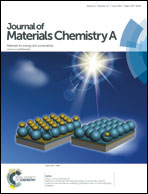An efficient synthesis of hydrothermally stable mesoporous aluminosilicates with significant decreased organic templates by a seed-assisted approach
Abstract
Recent reports on the synthesis of mesoporous aluminosilicates (MAs) with hydrothermal stability opened up a promising way to cracking large molecules. However, a large amount of organic template and a low zeolite yield remained unresolved for the practical application of MAs. In this article, an efficient and green route for synthesizing MAs with high hydrothermal stability is developed, which is characterized by a high product yield and a significantly decreased amount of organic template. By fine-tuning the amount of crystal seeds, MAs with high hydrothermal stability were obtained. Compared with the direct synthesis procedure, the seed-assisted (SA) route considerably improved the zeolite yield and decreased the synthesis cost. Characterization results elucidated that MA seeds embedded in the gel after partial dissolution provided a crystal growth surface, leading to the significant decrease of organic templates. Utilization of P123 for SA-2 (cr, 24 h) is 1.26 g zeolite per g P123, 2.4 times that of CS-C (0.52 g zeolite per g P123, CS-C is short for calcined crystal seeds). Moreover, the zeolite yield of SA-2 (cr, 24 h) is 50.2 g zeolite per L, 2.4 times that of CS-C (21.3 g zeolite per L). Our achievements shed light on the industrial application of MAs in FCC.


 Please wait while we load your content...
Please wait while we load your content...